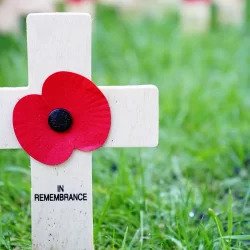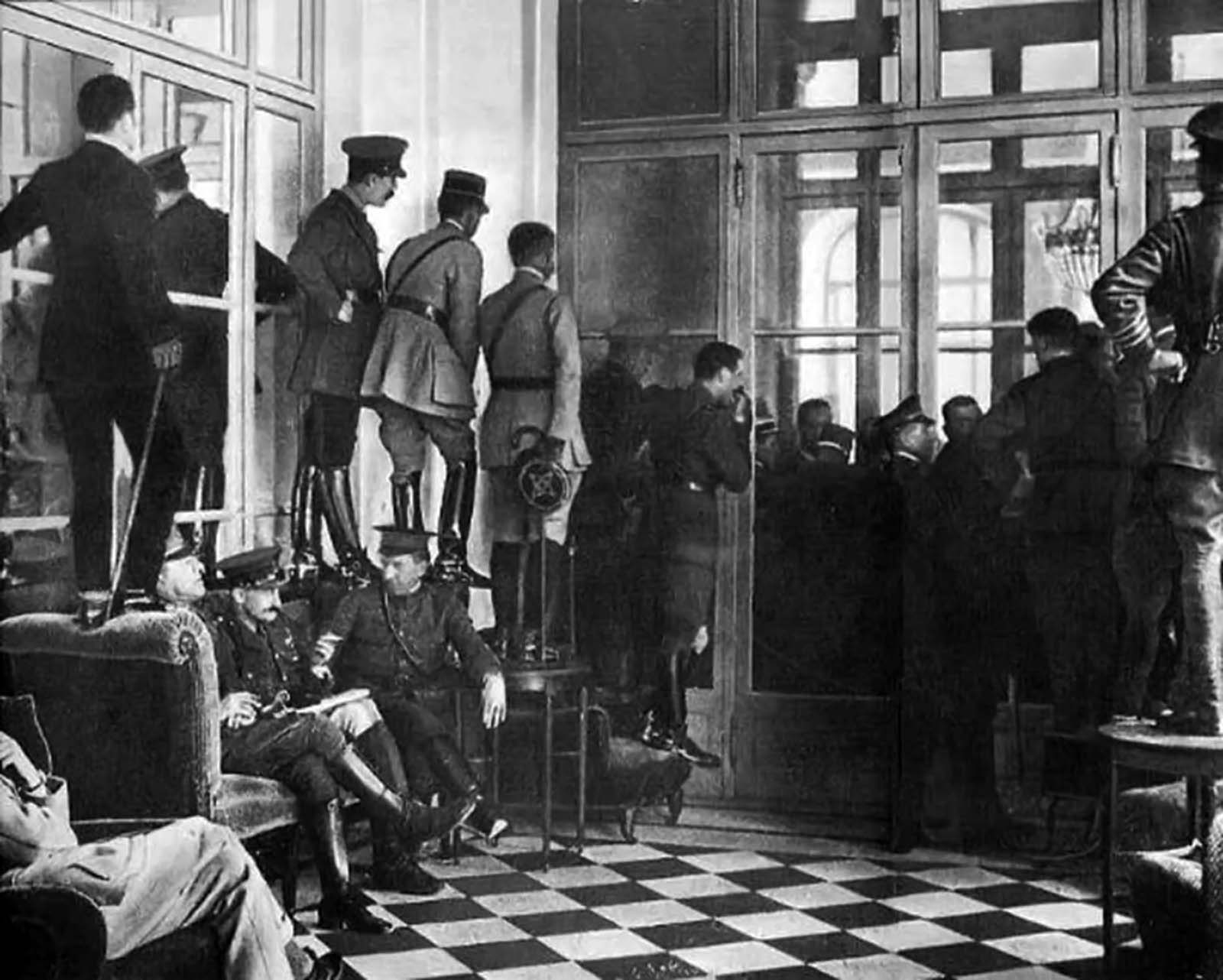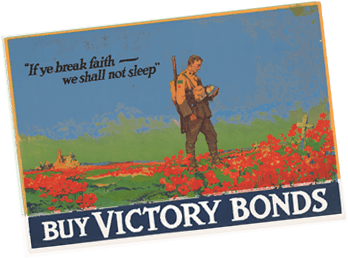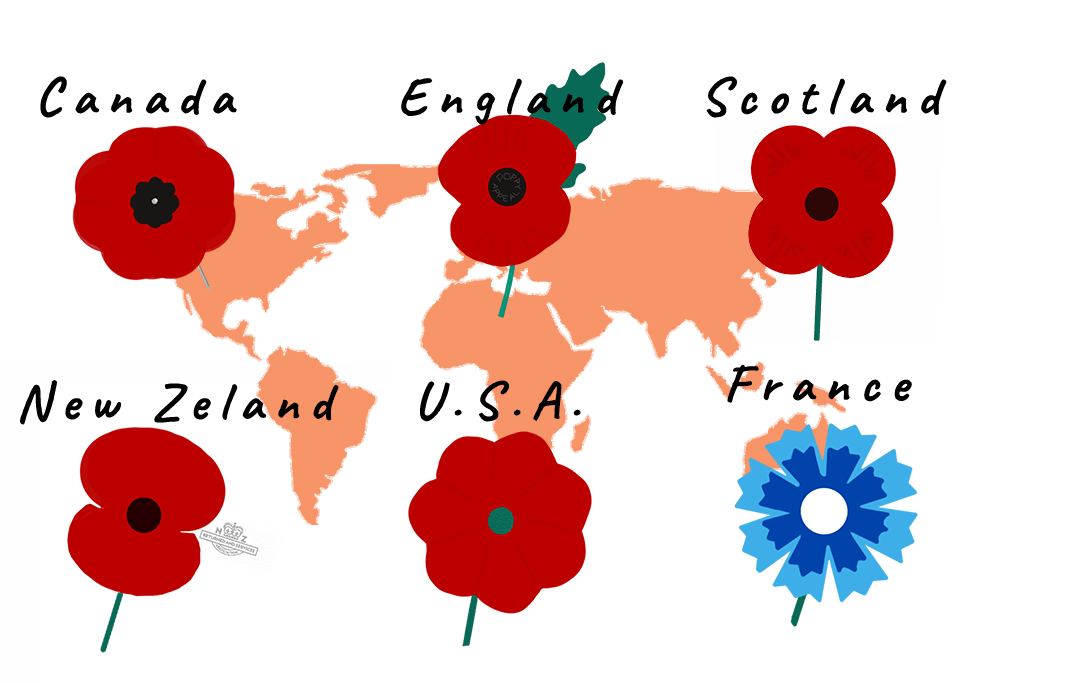Remembrance Day and its History
Remembrance Day is celebrated in Commonwealth countries, as well as in a few other countries. It is derived from Armistice Day, which was observed on the same day, November 11. Remembrance Day thus commemorates the end of bloodshed in the Great War and honours the armistice, the truce that brought peace to both sides and which was later made official by the Treaty of Versailles. In the United States, Veterans Day is celebrated on the same date.
In Canada, Remembrance Day is usually celebrated by wearing a poppy on the chest in the weeks leading up to it. In addition, several parades are organized in various cities and municipalities. On Remembrance Day itself, one or two minutes of silence are observed in most public institutions (schools, etc.). Some entities also hold special masses in addition to parades and ceremonies.
In Ottawa, a ceremony is held every year. The ceremony is comprised of a number of significant components, but the most important of these is a sequence made up of a trumpeter playing the Last Post, followed by a two-minute silence, and finally the Reveille. These moments are directly inspired by military practices. The Last Post signifies that the last post, or position, has been inspected and everyone can go to sleep. The Reveille marks the waking hour and the beginning of a better day. This sequence is followed by 21 cannon shots. Finally, the Act of Remembrance is recited in French, English and Aboriginal languages by a veteran.
The Poppy
Why poppies? These flowers grow particularly well in soil that has been freshly turned. Due to bombs, trenches and the movement of troops, the ground was particularly disturbed during the First World War. As a result, many poppies could be seen all over the European territory affected by the war. Many soldiers wrote about them in their letters home. Moreover, the Canadian soldier John McCrae is well known for his poem “In Flanders Field” relating the presence of poppies. This flower is now the symbol of Remembrance Day / Armistice Day.
In 2006, the purple poppy was adopted in remembrance for all the animals that served during wartime.
In Flanders fields the poppies blowBetween the crosses, row on row,That mark our place; and in the skyThe larks, still bravely singing, flyScarce heard amid the guns below.
We are the Dead. Short days agoWe lived, felt dawn, saw sunset glow,Loved and were loved, and now we lie,In Flanders fields.
Take up our quarrel with the foe:To you from failing hands we throwThe torch; be yours to hold it high.If ye break faith with us who dieWe shall not sleep, though poppies growIn Flanders fields.
The Act of Remembering
Remembrance is as much a social act as it is an individual one. In the context of Remembrance Day, the individual is not obligated to participate in the many ceremonies. Many are content to simply wear a poppy. However, this simple and very personal gesture can lead to deep reflection. What is commemoration for you and how is it enacted in your life?
All around us, traces of the past and the sacrifices of our ancestors are present. Commemoration, even in its simplest form, is a way of anchoring ourselves in our territory and creating our own identity in relation to our surroundings and their past. Whether it is through Remembrance Day ceremonies, museum exhibits or small signs of commemoration on a street corner, their implications and symbolism are unique and personal to each person who encounters these commemorative markers of the past.
By highlighting certain objects and places that might seem commonplace through commemorative names or symbols, it is possible to understand and become personally anchored in one’s past. Moreover, by remembering the different tragedies of our history, it allows us not to aovid repeating the mistakes and atrocities that took place before. In a way, commemoration as an individual and personal (or social) act enables the continuity of peace, for which many have had to sacrifice greatly in order to achieve it. The First World War was particularly devastating, and the conditions of those who served were very difficult. Commemorating these people on Remembrance Day, as well as all those who have served afterwards, allows us to understand the world we live in today.
The Royal Montreal Regiment Museum is offering an interactive tool that allows Westmount residents to rediscover their neighbourhood from a commemorative perspective via an interactive map. Start your journey here.
Article written by Aglaé Pinsonnault for Je Me Souviens. Translated by Marina Smyth.
Sources :
For a more academic approach:
- Debra Marshall, “Making sense of remembrance“, Social & Cultural Geography, vol. 5, no. 1, 2004, pp. 37-54.
- Barry Schwartz, “The Social Context of Commemoration: A Study in Collective Memory“, Social Forces, vol. 61, no. 2, 1982, pp. 374-402.
- Jay Winter & Emmanuel Sivan (dir.), “War and Remembrance in the Twentieth Century“, Cambridge, Cambridge University Press, 1999, 272 p.




